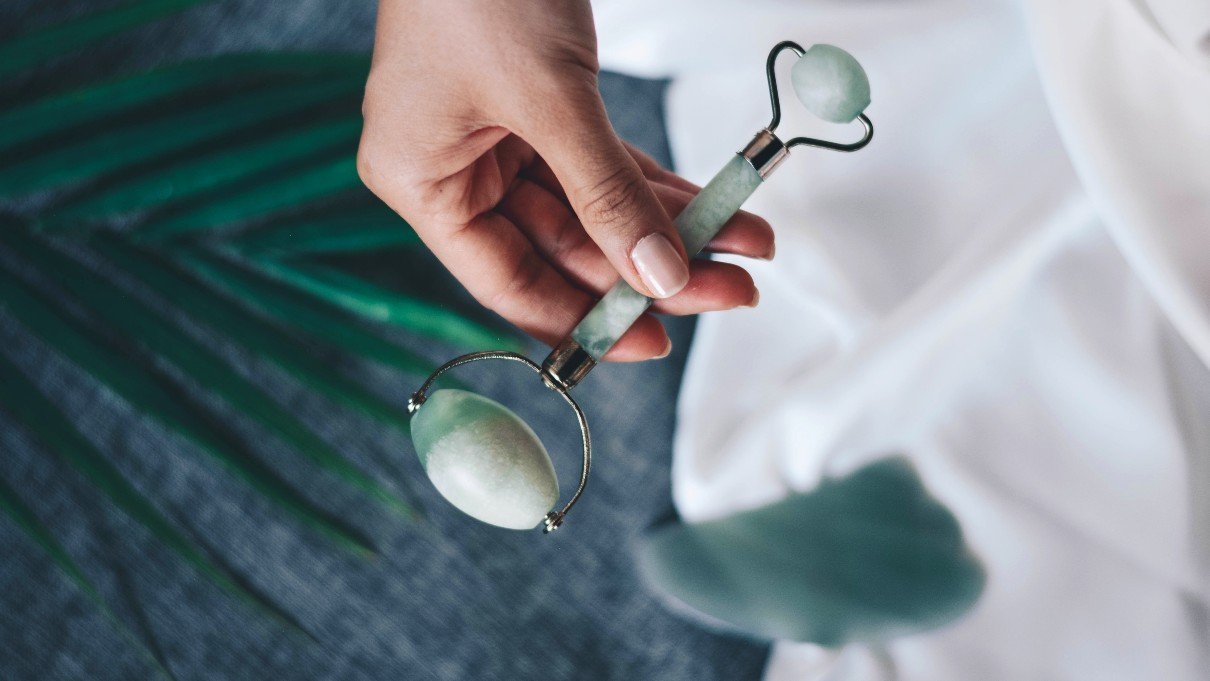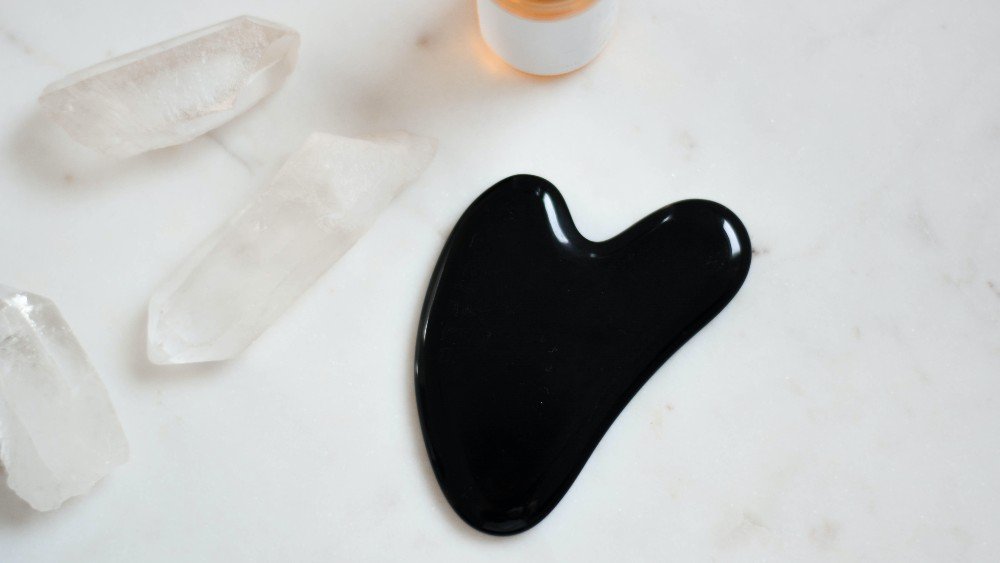Are Gemstone Beauty Tools Such as Jade Rollers and Gua Sha Eco-friendly?

Facial rollers and gua sha have recently become popular in the beauty industry, inspired by Chinese medicine and beauty rituals that use jade and other gemstones.
Jade is said to have both skin-healing and energy-balancing abilities, making it an ideal gemstone for beauty rituals. It’s said that using gua sha and/or facial rollers can help slow the signs of aging and stimulate blood flow.
But are they eco-friendly?
Is jade eco-friendly?
Jade mining is usually not eco-friendly, with many mining operations overwhelmingly unethical.
Myanmar produces the highest quality jadeite – a type of jade – in the world, and several high-profile accidents have been reported in recent years.
The jade mining industry is known to be poorly regulated. Corruption in the jade industry is linked to Myanmar’s military, including the junta that ruled the country until 2011 and the State Administration Council who took over during the February 2021 coup d’état.
In 2018, 17 people died in a mining compound directly related to the jade mining industry. It isn’t uncommon either.
116 people died in 2015 in a landslide in the Hpakant jade mine, and a further 54 workers were trapped (most presumed dead, as only 4 bodies of the miners were found) in 2019 in the same jade mine.
Around 200 people died in 2020, the worst mining disaster in Myanmar’s history, while mining jade. Myanmar’s Minister for Natural Resources and Environmental Conservation at the time suggested that the jade pickers who died were “greedy”.
Myanmar’s jade industry is thought to be worth around 31 billion dollars, though much of the profits go to the ruling elite. This amount is half of the country’s GDP. Jade miners make only about $60 out of an average $700+ per rock.
There are around 300,000 jade pickers employed in Myanmar, all risking their lives every day in the face of frequent landslides and other hazards such as disease and drug addiction. Some are even shot dead.
They are considered dispensable by the jade industry’s elites who capitalize on their work.
This has led to jade being termed blood jade – much like blood diamonds.
Are jade face rollers sustainable?
Jade rollers are face rollers made of jade.
Originally from China, jade rollers have been used for thousands of years, but have recently become a Western beauty trend.
By rolling the roller up your face (never down), it’s meant to reduce the signs of aging and puffiness in the face.
White Lotus sources their nephrite jade from China to avoid using jadeite from Myanmar. They monitor the jade supply chain to ensure ethical jade is purchased.
Beauty alternatives to jade rollers
Dermatologists have ruled that the health benefits of jade rollers rely more on the pressure of the roller than the jade itself. A facial massage with your fingers can produce the same effects.
Other face massaging tools – like metal massage rollers, ice rollers, and face sculpting beauty rollers – can be great alternatives for jade rollers, as all can perform the same massaging techniques. Many of these are made from metal instead of jade.
Vitamin C can also help protect the skin from sun damage and boost collagen.
Even just wearing sunscreen regularly helps reduce the signs of aging, as damage from the sun can prematurely age the skin.
Whatever you use, make sure to clean your beauty tools properly to ensure that you aren’t collecting bacteria and transferring it back to your skin. Licensed massage therapists can provide clean and well-practiced facial massages.
But if you find the rolling works for you, it’s worth ensuring that you look after your current roller so you don’t have to buy another.
Otherwise, you can either purchase a second-hand roller, find a business dedicated to ethically sourcing gemstones, or try a different material altogether.
Finding responsibly sourced gemstones can be difficult, so brush up on common face roller materials and then see if the company has a statement about ethical sourcing.
If a business isn’t open and honest about their sustainability policy or where they source their gemstones, they’re not eco-friendly.
Is gua sha eco-friendly?
Gua sha is a facial beauty treatment derived from traditional Chinese medicine. Using a smooth tool, the tool massages the face by stroking the skin to improve circulation and release tension.

Western gua sha usually uses rose quartz or jade as the tool’s material, but in China it’s common for premium quality wood or stone to be used for gua sha.
The use of gemstones in gua sha has been criticized as a way to “up the cost to consumers to get in on this very trendy beauty routine. In this case, it’s a bit of whitewashing mixed with capitalism”, as said by Ada Hsieh of Ada Lip Beauty.
Gua sha beauty tools usually use nephrite jade instead of jadeite, but it’s important to check what you’re buying to avoid contributing to the blood jade industry.
Facial gua sha is eco-friendly, provided you’re not buying jadeite gua sha stones. Rose quartz gua sha tools might be better than jade stones, but unfortunately, there aren’t enough studies to determine whether rose quartz is eco-friendly.
While facial gua sha might be generally more sustainable for the environment, the Westernization of gua sha may do cultural harm.
Is gua sha cultural appropriation?
Cultural appropriation is another concern when using Eastern practices.
Many beauty trends take the “aesthetic or material elements from another culture by someone who is not a member of that culture without giving credit or profit”, say Denise Nicole Green and Susan B. Kaiser.
Brands that commercialize gua sha into heart-shaped stones or trinkets without properly appreciating the culture utilize cultural appropriation to create profit.
Where you buy is just as important as what you buy.
Gua sha was used as part of traditional Chinese medicine for heatstroke and seasonal diseases.
Instead of using a stone, any tool could do, from animal bones to soup spoons. Claims that gua sha was part of the beauty routine of ancient Chinese royals are false claims used to market the Western version of the practice.
